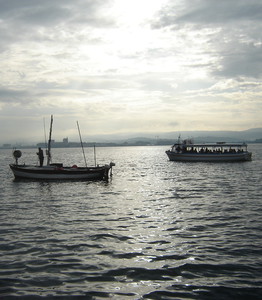
The aim of the community-led local development (hereinafter: CLLD) is the pursuit of integrated and balanced development of local areas according to the 'bottom-up' approach while considering the potential and capacities for endogenous development, in particular by strengthening social capital and through active inclusion of the population in planning and decision-making concerning local development according to the principles of subsidiarity and participative democracy. CLLD actions are aimed at fostering employment and territorial cohesion through the promotion of economic growth, social inclusion, creation of jobs and support to employability and mobility of the labour force in coastal and inland communities dependent on fishing and aquaculture, including the diversification of activities in fisheries and other sectors of maritime economy.
CLLD in coastal areas helps preserve the tradition of commercial sea fishing as well as natural and maritime cultural heritage of the local area. It is crucial that stakeholders are more widely involved in the development of the area: fishermen, mariculture workers, municipalities, science and research, institutions, NGOs, and individuals involved in protection of cultural heritage, non-government environmental organisations and other interested groups active in the local area. In order to
exploit the potential of freshwater aquaculture in rural areas, foster tighter connections and cooperation among stakeholders, strengthen the roles of sectors and explore the possibility of alternative sources of income within the local area, CLLD will also involve the sector of freshwater aquaculture, namely in those inland parts of the Republic of Slovenia where a considerable part of Slovenian production from aquaculture and a considerable number of businesses involved in freshwater
aquaculture are intended for use in food for people.
Pursuant to Article 35 of Regulation (EU) No 1303/2013, support is given to the following sub-actions:
Three ESI Funds operate in the Republic of Slovenia under the scope of sustainable development: the European Agricultural Fund for Rural Development, the European Regional Development Fund, and the European Maritime and Fisheries Fund. A common national Implementing Regulation concerning community-led local development in the programming period 2014–2020 (Official Gazette of the Republic of Slovenia, No 41/15), which lays down the common rules for implementing community-led local development, was prepared. The common approach to the CLLD, which enables the local area to develop under three ESI Funds, is the decision of the local action group which will need to comply with the provisions of a particular fund. This is an opportunity to identify local potentials within the scope of common strategies that will create value added for life in the local area by preserving the existing and creating new business opportunities. This is also a chance to promote the organisation and connection in the fisheries sector, common presentation in the market, improved recognisability of the sector in the coastal areas, connections with other local players, interregional and international co-operation and acquisition of new knowledge, exchange of experience and transfer of good practice.
The local development strategy and the projects co-financed from the European Maritime and Fisheries Fund 2014–2020 shall observe the following output indicators:
Decree on the Implementation of the Community-led Local Development in the Programming Period 2014–2020
Amendment of Decree on the Implementation of the Community-led Local Development in the Programming Period 2014–2020 (Official Journal of Republic of Slovenia; No. 28/2016, p. 132-140)